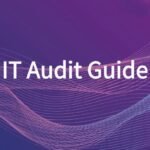Why and When to Conduct an IT Audit? Since an IT audit is essential for any organization that relies on technology to operate, compete, and innovate. In an era of digital transformation, increasing cyber threats, regulatory complexity, and growing data volumes, IT audits provide independent assurance that your technology systems and controls are secure, effective, and aligned with business goals.
🎯 Key Objectives of Conducting IT Audit
| Objective | Purpose and Benefit |
|---|---|
| 1. Risk Identification and Mitigation | Detect vulnerabilities, configuration flaws, or control weaknesses that could lead to data breaches, service disruptions, or financial losses. Helps proactively manage and reduce IT-related risks. |
| 2. Regulatory and Legal Compliance | Ensure adherence to laws, regulations, and industry standards such as GDPR, HIPAA, SOX, PCI-DSS, ISO/IEC 27001, and NIST. Reduces legal exposure and potential penalties. |
| 3. Assurance of Information Security | Validate that data confidentiality, integrity, and availability (CIA triad) are maintained across systems and networks. Increases trust among customers, regulators, and business partners. |
| 4. Evaluation of IT Governance | Assess the effectiveness of IT policies, procedures, roles, and oversight. Promotes strategic alignment between IT and the broader business objectives. |
| 5. Operational Efficiency and Cost Control | Identify inefficiencies, outdated systems, or redundant processes that hinder performance. Offers actionable recommendations for optimization and automation. |
| 6. Protection of Critical Assets and Data | Safeguard sensitive business and customer information from unauthorized access or misuse. Supports data lifecycle management and privacy protection. |
| 7. Business Continuity and Disaster Preparedness | Evaluate the robustness of disaster recovery and continuity plans. Ensure readiness to respond to major IT disruptions or crises. |
| 8. Third-Party Risk Management | Audit outsourced IT functions, cloud service providers, and technology vendors to ensure they meet security and service requirements. Mitigates supply chain and outsourcing risks. |
| 9. Transparency and Accountability | Improve transparency across IT operations and create a culture of accountability. Builds stakeholder confidence through documented evidence of control effectiveness. |
| 10. Support for Strategic Decision-Making | Provide insights to management on IT investment performance, infrastructure health, and security posture. Enables better planning and technology governance. |
📌 Business Context: Why IT Audit Is a Strategic Imperative
In modern enterprises, technology is no longer just a support function—it is a critical driver of innovation, productivity, and competitive advantage. However, this dependency introduces systemic risk:
- Cybercrime is escalating in both frequency and sophistication, making reactive defense insufficient.
- Regulators are intensifying scrutiny, particularly in finance, healthcare, energy, and critical infrastructure.
- Digital transformation initiatives (e.g., cloud migration, AI, IoT adoption) create complex risk surfaces.
- Remote work models have redefined how and where data is accessed and stored, increasing exposure.
In this environment, IT audit becomes not just a compliance exercise, but a business necessity—helping organizations validate that technology investments are secure, efficient, and aligned with growth strategies.
✅ Outcomes and Value Delivered by IT Audits
| Stakeholder | Value Provided |
|---|---|
| Executives & Board | Informed decision-making through risk-based insights and assurance reports |
| CIO/CTO | Identification of gaps in IT operations and opportunities for strategic improvement |
| CISO & IT Security Teams | Confirmation of control effectiveness and identification of emerging threats |
| Compliance & Legal Teams | Evidence of regulatory compliance and support during audits or investigations |
| Audit Committee | Independent assessment of IT risk landscape and mitigation status |
| Customers & Partners | Increased confidence in the organization’s commitment to security and privacy |
🔍 When to Conduct an IT Audit?
Organizations should perform IT audits:
- Annually as part of the internal audit cycle
- Before or after significant system changes (e.g., ERP migration, cloud adoption)
- After major incidents (e.g., data breach, prolonged outage)
- To prepare for external regulatory audits or certifications
- When entering new markets or launching new digital services
🧠 Conclusion
Conducting regular IT audits is not only a best practice but a strategic activity that protects value, enhances trust, and supports sustainable growth. It bridges the gap between IT risk and business performance, ensuring that your technology landscape remains secure, compliant, and optimized for the future.

- A Comprehensive Guide to IT Audit: Purpose, Frameworks, Processes, and Best Practices
- IT Audit Guide 01: What Is IT Audit? Why IT Audit Matters?
- IT Audit Guide 02: Why and When to Conduct IT Audit?
- IT Audit Guide 03: Common IT Audit Frameworks
- IT Audit Guide 04: Scope and Content of IT Audit Work
- IT Audit Guide 05: IT Audit Process (Step-by-Step Guide)
- IT Audit Guide 06: IT Audit Templates and Checklists
- IT Audit Guide 07: IT Audit Deliverables
- IT Audit Guide 08: IT Audit Best Practices

